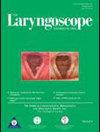Disparities in Adult Otolaryngology Patients with Limited English Proficiency: A Systematic Review
Abstract
Objective
Limited English proficiency (LEP) has become increasingly recognized as an independent predictor of adverse health outcomes in the United States. We aim to examine trends and summarize current insights into LEP-related disparities in adult otolaryngology.
Data Sources
Web of Science, PubMed, and Scopus.
Methods
A systematic review of US-based, peer-reviewed literature evaluating outcomes in adult otolaryngology across primary language or varying levels of English proficiency; results were analyzed for study design, subspecialty, cohort demographics, and outcomes; findings were further assessed with the Kilbourne conceptual framework for health care disparities.
Results
An initial search yielded 3886 articles. After removal of duplicates, 2906 articles were screened and 31 studies were included after full-text analysis. Head and Neck Oncology (25.8%) and Otology (16.1%) were the most highly represented subspecialty topics. Patients with LEP represented an average of 21.71% (Range 2.21% – 51%) of the study populations. Definitions of LEP were variable. Furthermore, studies specifying patient-reported LEP status reported significant findings more often than those using electronic health record-derived data (p < 0.01). Under the Kilbourne framework, all studies were “detecting” (N = 21, 67.7%) and “understanding” (N = 10, 32.3%) disparities. In outcomes-focused studies, patients with LEP presented with a higher burden of oncologic disease, more severe hearing loss, and disparities in treatment access/implementation.
Conclusion
Patients with LEP are adversely impacted across various otolaryngology subspecialties. Defining these inequities is vital to provide more targeted and comprehensive care for patients with LEP.
Level of Evidence
NA Laryngoscope, 135:1248–1258, 2025


 求助内容:
求助内容: 应助结果提醒方式:
应助结果提醒方式:


